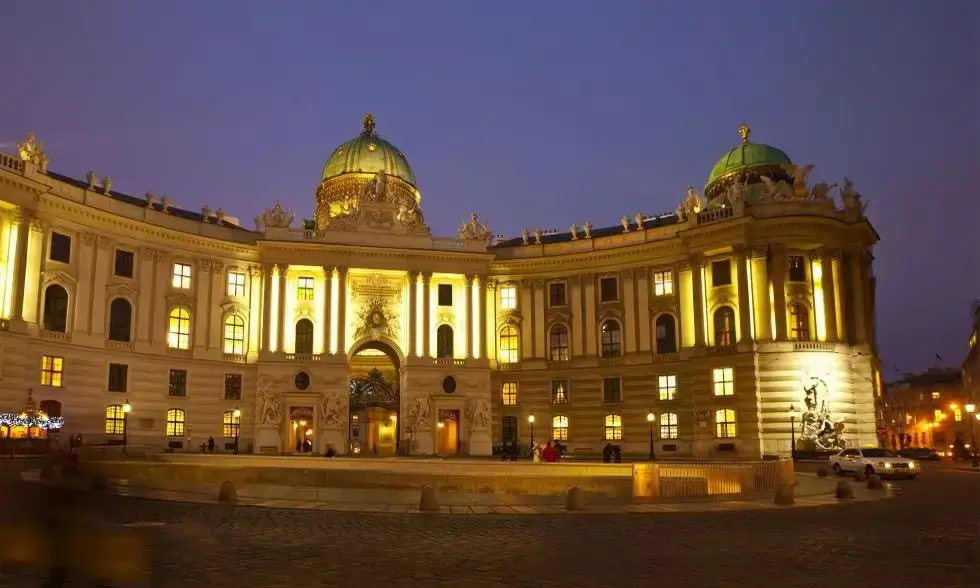Austria's most popular attractions are located near the Austrian highways.
Vienna, the center of culture
For travelers from Budapest, the most convenient route to the capital of culture is via the M1 and then the A4 motorway from Hegyeshalom. However, it is important to know which highways require an e-vignette. In Austria's capital, wherever you turn, you will encounter history and elegance simultaneously. Vienna is like an art treasure chest carefully collected over many years. The palaces, such as Schönbrunn Palace, Belvedere Palace, or Hofburg, dazzle the eye with the unfading luxury of baroque splendor. The collections in Vienna's museums, with their impressive variety and richness, are simply among the must-see attractions.
Vienna was once home to Empress Sisi, the beautiful sovereign consort, Gustav Klimt, the most outstanding painter of the renowned Secession movement, and Freud, who developed his psychoanalytic theory here.
Swarovski Crystal Worlds, the jewel of Tyrol
In Tyrol (Austria), the world-famous Swarovski empire's exhibition area "Crystal Worlds" can be visited in the town of Wattens along the A2 motorway. Daniel Swarovski founded his company dealing with cut crystals in Tyrolean Wattens in 1895, and on the hundredth anniversary, in 1995, André Helle built the Crystal Worlds in the spirit of Swarovski. The 7.5-hectare garden is famous for its artworks made of crystal, including the Crystal Cloud and Mirror Pool, which enchant the place. The park's most famous masterpiece is the grass-covered Giant spouting water, inviting visitors into the hidden worlds of 17 sparkling Chambers of Wonder. In the Crystal Worlds garden, various play towers and playgrounds offer excitement for children.
Salzburg, the birthplace of Mozart
Salzburg's regions are easily accessible by the M1 and then the A1 motorway, followed by the A10 Tauern motorway towards Villach. One of the world's most famous composers, Wolfgang Amadeus Mozart, was born in this bustling city. His former home, the bright yellow birth house, still welcomes visitors today and functions as a museum showcasing the composer's life. The rooms remain in their original state, reflecting the atmosphere where the prodigy of music history spent his first 17 years. The museum houses original documents, memorabilia, family portraits, and instruments. Here is also preserved the miniature violin on which Mozart played as a child, along with buttons from his coat and a lock of hair.
Burg Kreuzenstein, the preserved medieval castle
The castle can be visited near Leobendorf, in Lower Austria. From Vienna, you need to take the A22 motorway to the Korneuburg-West exit, from where following the signs, the parking area below the castle can be reached in a few minutes.
Kreuzenstein Castle is mentioned in sources from the 12th century, but its medieval appearance is actually a reconstructed version from the 19th century. The original castle was destroyed during the Thirty Years' War. The castle is built on top of a small hill, offering a great view of the surrounding countryside. The castle is a popular tourist destination, hosting classical music concerts in the summer, and it occasionally serves as a filming location.
Graz, where history blends with the modern world
The A9 motorway is a connecting highway in Austria. It starts at the A1–A8 Voralpen junction and extends to the Slovenian border, providing a connection between Germany and both the Slovenian and former Yugoslav road networks through Austria.
Graz, Austria's second largest city, is also the birthplace of Arnold Schwarzenegger. Its atmospheric and charming historic old town is home to its most famous landmark, the Clock Tower, offering a beautiful view over the city. Several museums and castles are worth a visit at least once. The Armoury Museum is worth seeing, as it was one of the city's largest armories centuries ago. Ferdinand II's mausoleum is regarded as one of Graz's most beautiful architectural monuments. And the complexity of its architecture is evidenced by the bluish, biomorphic-shaped roofed Kunsthaus, referred to by locals as the "friendly alien." The extraordinarily designed building is a museum of modern and contemporary art.
The official Austrian highway e-vignette can be purchased here, in the shop.









